5 Kinds of Non-metallic Mineral Ultrafine Grinding Equipment,Which Do You Know?
2018-10-16 01:13:15
Non-metallic minerals (such as quartz, kaolin, calcium carbonate, bentonite, wollastonite, barite, mica, etc.), their hardness, strength, ductility and other characteristics are significantly different from metals or other organic materials, generally hard and brittle, Therefore, the pulverization refining (0.5-10μm) process also has its own characteristics, and has high requirements on the fineness, purity and grain shape of the particles.
At present, the ultra-fine pulverizing equipment commonly used in the non-metallic mineral industry mainly includes Raymond mill, high-pressure mill, ball mill, medium-speed micro-grinding, vertical mill. Different kinds of crushing equipment are suitable for minerals with different properties, and have specific correspondence to hardness, raw material particle size, humidity, yield, etc. Different operating parameters of the same equipment also have a decisive influence on product characteristics.
1. Raymond mill
The main body of Raymond Mill consists of a frame, a grinding roller, a grinding ring, a blade, an inlet volute, a casing and a motor. The working process of the main body of Raymond mill is to rotate the central shaft through the transmission device. The upper end of the shaft is connected with the plum blossom frame. The frame is equipped with a grinding roller device and forms a swinging fulcrum. The grinding roller revolves around the grinding ring, and the grinding roller itself Rotating due to friction. The lower end of the plum blossom frame is equipped with a blade system, and the position is at the lower end of the grinding roller. During the same process of the blade and the grinding roller, the material shovel is fed between the grinding roller and the grinding ring to form a cushion layer, and the material layer is subjected to the grinding roller. The rotation produces an outward centrifugal force (ie, a squeezing force) to crush the material, thereby achieving the purpose of pulverizing the material.
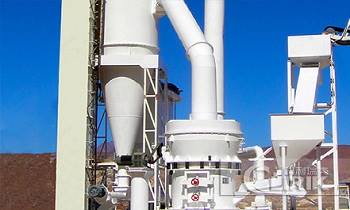 ▲ Raymond mill
▲ Raymond mill
Widely used in metallurgy, building materials, chemicals, mining and other fields
Applicable materials: gypsum, talc, calcite, limestone, marble, potassium feldspar, barite, dolomite, granite, kaolin, pennite, medical stone, bauxite, iron oxide red, iron ore, etc. Between 613 microns and 440 microns (0.613 mm - 0.044 mm).
2. High pressure mill / high pressure suspension roller mill
High-pressure suspension roller mill can also be called high-pressure Raymond mill, referred to as high-pressure mill, high-pressure mill, and suspension roller mill.
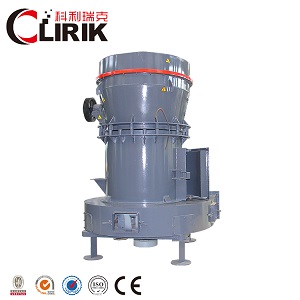 ▲ High pressure suspension grinding mill
▲ High pressure suspension grinding mill
It is suitable for materials with humidity below 6% and hardness not exceeding 9.3. The product size can be adjusted in the range of 80-425 mesh, and the finest particle size can reach 1000 mesh.
It is mainly suitable for grinding and pulverizing conventional materials, such as kaolin, limestone, calcite, talc marble, barite, gypsum, iron oxide red, iron oxide green, aluminum hydroxide, pigment, bentonite, clay and so on.
In the main body of the high-pressure suspension roller mill, the grinding roller assembly is suspended on the grinding roller hanger through the cross-supporting shaft, the grinding roller hanger is fixedly connected with the main shaft and the blade holder, and the pressure spring is pressed outside the cantilever of the grinding roller bearing chamber. On the end face, the cross roller shaft is used as a fulcrum to force the grinding roller to press tightly on the inner surface of the grinding ring. When the main motor drives the main shaft to rotate through the transmission device, the blade mounted on the blade holder rotates synchronously with the grinding roller. The roller rotates around its own axis while rolling inside the grinding ring. The motor drives the analyzer to rotate through the transmission. The higher the impeller speed, the finer the powder particles are sorted. In order to ensure that the mill works under negative pressure, the increased air flow is discharged into the bag filter through the residual air pipe between the fan and the main engine, and is purified and discharged into the atmosphere. The air-selected airflow of the high-pressure suspension roller mill is circulating in the fan--milling--cyclone-fan, so it has less dust than the high-speed centrifugal pulverizer, and the operation workshop is clean and the environment is non-polluting.
3. Ball mill
The ball mill is the main equipment of the large-scale heavy calcium carbonate production line. It is used to produce heavy calcium carbonate products with grades of d97=5μm, 10μm, 16μm, 45μm, etc., which are characterized by large single-machine processing capacity. It has become one of the preferred equipment for the current large-scale superfine heavy calcium carbonate production line of 50,000/year.
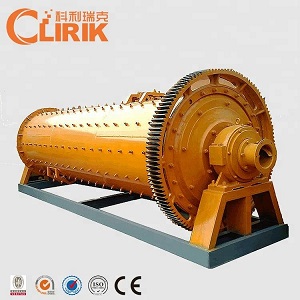 ▲ Ball mill
▲ Ball mill
The characteristics of the ultra-fine pulverization process of the ball mill are as follows: (1) Closed-circuit operation with the fine classifier, the cycle load rate is as high as 300%-500%, therefore, the residence time of the material in the mill is short, and the qualified fine-grained materials can be separated in time. Out, avoid over-grinding, resulting in increased energy consumption of ultrafine powder agglomeration and pulverization; (2) Multi-stage and multi-stage classifiers after a billiard mill to produce a variety of products with different fineness and particle size distribution.
4.Three-ring four-ring medium-speed micro powder grinding mill
Three-ring four-ring medium-speed micro powder grinding mill is for super-fine grinding materials with hardness less than 6 in Moh‘s scale and humidity less than 6 percent such as kaolin, limestone, basalt, calcite, marble, talcum, barite, gypsum, dolomite, bentonite mud, mica, pyrophyllite, sepiolite, carbon black, diatomite, graphite, alunite, fluorite, potassium feldspar, phosphorite, pigment, up to 200 kinds. The granularity (or final size) of the finished products can be freely adjusted between 325-3000meshes (0.045-0.0057mm), and the capacity (ton/hour) ranges from 0.4T/H to 12T/H depending on the final size and the grinding materials.
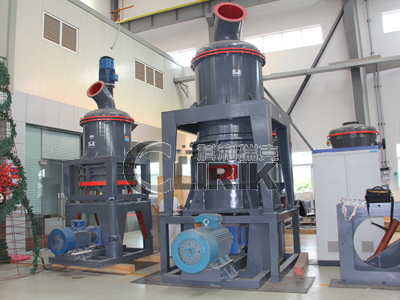 ▲ Three-ring four-ring medium-speed micro powder grinding mill
▲ Three-ring four-ring medium-speed micro powder grinding mill
It mainly consist of main unit, classifier, powder collector, dust cleaner, blower, muffler, sound-proof room, crusher, bucket elevator, storage hopper, and vibrating feeder.
5.Ultrafine vertical roller mill
Vertical roller mill is suitable for huge capacity producing, widely used in grinding non-flammable and non-explosive materials under 9.3(the Moh's hardness), such as quartz, feldspar, calcite, talcum, barite, fluorite, iron ore, copper ore quartz, especially for slag, cement clinker, zircon sand, fly ash and carborundum, coal, etc.
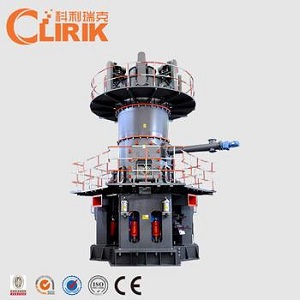 ▲ Ultrafine vertical roller mill
▲ Ultrafine vertical roller mill
The grinding disc is driving by motor through reducer. The material falls to grinding disc from the feed opening. The materials are driven to the edge of disc by the centrifugal force and crushed into fine powders by rollers. Then, the hot air from the nozzle take the fine powder to high effiency classsifer.The qualified powder are taken by the air to the powder collector to be collected, while the unqualified powder are sent back for regrinding.





